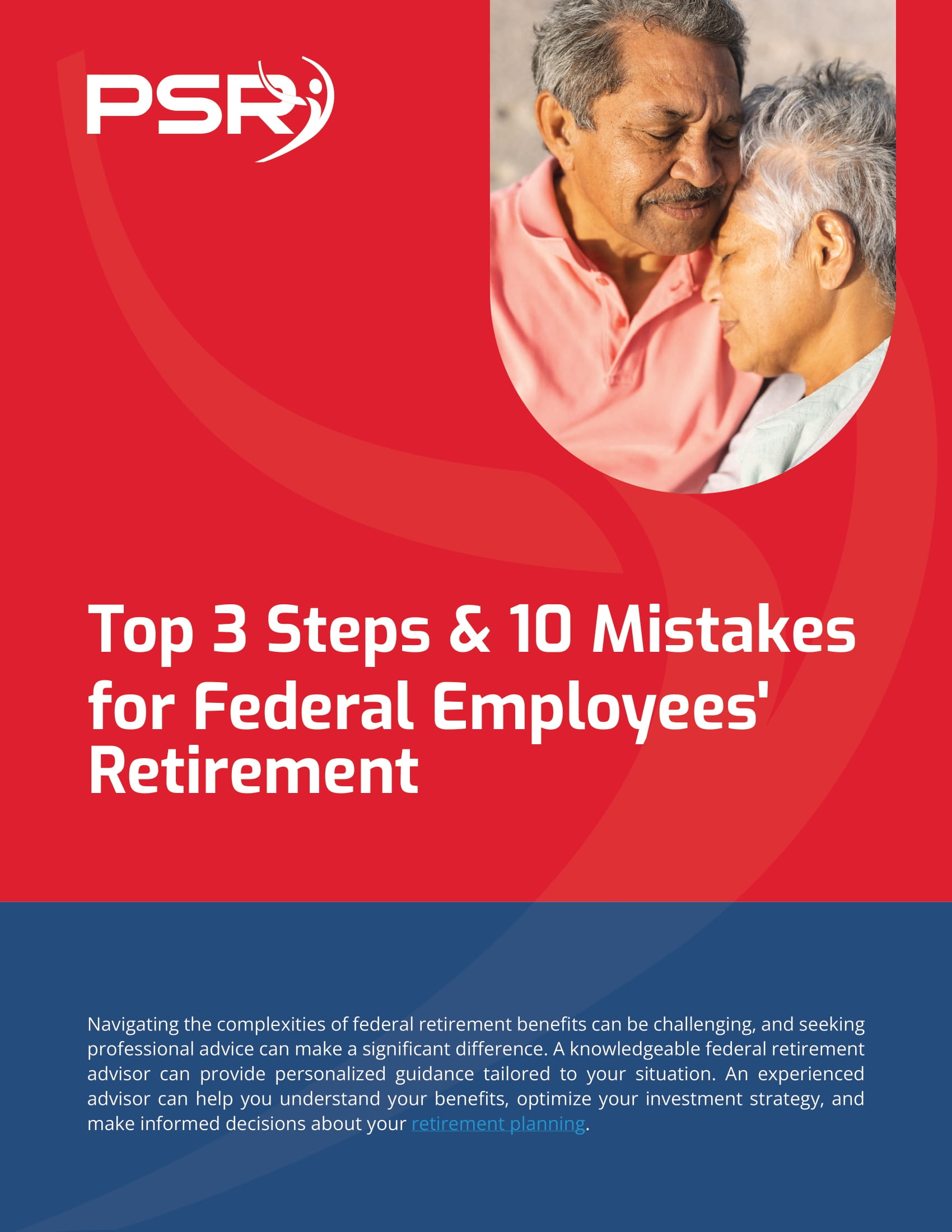Schedule A Appointees Challenges

On May 15, 2014, the U.S. Equal Employment Opportunity Commission (EEOC/Commission) published an Advance Notice of Proposed Rulemaking in the Federal Register (79 Fed.Reg. 27,824-27,826). The Notice was titled “The Federal Sector’s Obligation To Be A Model Employer of Individuals with Disabilities.” The EEOC is seeking public comment on how to implement the federal government’s statutory obligation to be a “model employer” of the disabled. The Notice seeks answers to questions about the hiring of disabled employees, retention, promotions, supervisorial and managerial accountability for hiring and retention of the same. A total of seven (7) questions are asked by the Commission to initiate discussion and comments for guidance on the strict specificity of what, in essence, does a model employer for the disabled look like. Comments are due by July 14, 2014.[1] The undersigned author respectfully requests that all federal employees, regardless of whether you are disabled, look at the questions proposed by the Commission found in the Federal Register at https://www.federalregister.gov/articles/2014/05/15/2014-11233/the-federal-sectors-obligation-to-be-a-model-employer-of-individuals-with-disabilities and respond.[2]
Section 501 of Rehabilitation Act
All responsibility for the administration and enforcement of equal opportunity in federal employment is vested in the EEOC. The Commission is authorized under 29 U.S.C. 794a (a)(1) to issue rules, regulations, orders, and instructions pursuant to Section 501 of the Rehabilitation Act. Pursuant to the above, the EEOC meets the necessary jurisdictional question as to whether the EEOC has standing to promulgate such laws, rules, regulations etc. The Chairwoman stated that her concern is in regard to additional guidelines and regulations as to the fulfillment of the statutory requirements of Section 501 of the Rehabilitation Act and what it means to be a “model employer” of individuals with disabilities in fear that federal agencies may not fulfill their obligations. The author of this article is very concerned about the rights of the disabled when the federal government is relying on the public[3] to tell them how to be a leader, an educator, an enforcer, act without bias or prejudice, be an active listener, engage in substantial on-going dialogues with the disabled employee and support services, to research – assume the responsibility to be informed of what is available via technology, to advance the individual case of the disabled employee (for whom first, second and third level management is responsible), measures of supervisorial accountability and the consequences for failure to do what is required by law, just to list a few. Leadership, compassion, ethics, integrity and a moral compass cannot be legislated, taught or be learned. Regardless of a supervisor’s level of management, especially those who hold positions of first, second and third level supervisorial duties, if they hold biases and prejudices against disabled individuals, or are fearful of budgetary constraints, no regulation will move them “off the dime” to do anything – it will continue to be business as usual. And, when the agency does not comply or comport with the necessary actions required of them as to hiring, retention, promotion, training and full workplace integration will the agencies, the EEOC in particular, help them cover up the violations against the disabled by defending themselves against these types of charges as they have been since the EEOC was designated the “model employer” for the disabled? This narrows the question and leads to the even larger, more substantive question of what and who will monitor the actions of all actors and how accountable and to whom will they be held accountable?
In all respect, this question cannot be fully answered appropriately without knowing some history about the federal government’s obligation and responsibility towards the disabled.
American with DIsabilities Act (ADA) BACKGROUND FACTS
In 1990, Congress passed the Americans with Disabilities Act (ADA) which was incorporated into the Rehabilitation Act. In October of 1992, the the Rehabilitation Act was ameneded which adopted the nonaffirmative action standards of the ADA AND MADE THEM APPLICABLE TO THE FEDERAL GOVERNMENT.
On March 13, 1998, Executive Order 13078 was promulgated, titled “Presidential Task Force on Employment of Adults with Disabilities.” The task force was charged with creating a coordinated and aggressive national policy to bring working-age individuals with disabilities into gainful employment with the federal government at a rate approaching that of the general adult population.
On July 26, 2000, President Clinton issued Executive Order 13163, found at 65 Fed. Reg. 46.563 (2000) and titled “Increasing the Opportunity for Individuals with Disabilities to be Employed in the Federal Government.” Executive Order 13163 was issued to augment the hiring, placement and advancement of qualified individuals with a disability[5] into the federal workforce and to establish goals and facilitate Section 501 of the Rehabilitation Act.[6] Section 501 of the Rehabilitation Act contains a clause that mandates federal agencies to engage in affirmative action plans to incorporate the disabled into the federal workforce. The Order proposed that based on current hiring trends and increased the number of outreach type programs with the goal of hiring 100,000 disabled employees (severely disabled or targeted disabilities) within a five year period.
On June 18, 2001, Executive Order 13217 was issued with the goal of increasing the productive employment of adults with disabilities.
On September 25, 2008, President Bush signed the Americans with Disabilities Act Amendment Act (ADAAA) with the effective date of January 1, 2009.
Reaching further back into time the Rehabilitation Act of 1973 prohibited discrimination of disabled employees in the federal government and Section 501 requires federal agencies to develop affirmative action programs for hiring, placement, and advancement of persons with disabilities. The Rehabilitation Act of 1973 has been amended numerous times. Important to this article was an amendment in 1979 when the term “targeted disabilities” was first officially recognized by the EEOC. Targeted disabilities, as defined by the EEOC, are listed as follows: blindness (including low vision), deafness, missing extremities, partial paralysis, convulsive disorders, mental retardation,[7] mental illness, or genetic or physical conditions affecting limbs and or spine. Those individuals with targeted disabilities are precisely the ones the federal government purposefully seeks out because it is understood that these individuals are less likely to be employed in the private sector. Moreover, the chances of retention and advancement were far lower then what the federal government considered acceptable as it was statistically unrepresentative of a diverse workforce. Dozens and dozens of Management Directives promulgated by the EEOC as to the rights of the disabled and the obligations of management to the disabled have been issued since the 1970s, to name each and every one of them would unduly lengthen this article.
The above discussion serves as a bare outline of the history of incorporating disabled employees into the federal workplace and society’s attempt at breaking away from the once stereotypes that people held about the disabled. Unfortunately, the bias and prejudices against the disabled run deeper in our society than originally perceived. The historical legal background supplies the reader with a perspective that allows for further examination and inquiry.
THE FEDERAL GOVERNMENT’S HIRING AND RETENTION OF DISABLED EMPLOYEES
A very successful method for achieving employability of the disabled came from the federal government’s Outreach Programs. Public forums were held by top federal government officials representing various agencies inviting those who were severely disabled to apply for positions within the federal government under what is referred to as the Scheduling “A” Appointment Authority.[8] Schedule “A” seeks out either targeted disabled employees or severely disabled employees who were certified as job ready[9] or through other factors determined as likely to succeed in a particular job.
Schedule “A” Appointees are hired with the understanding that the federal government has taken on a special obligation and responsibility to the disabled populace that is continuous and on-going in nature. Perhaps, under Title VII the wording should be changed to something more compelling such as “the federal government has expressed its obligation and responsibility as a moral imperative to hire, train, retain and promote disabled individuals into the federal workforce in the spirit of the law as intended by the past administrations and Congress. Most agencies have been successful in recruiting the severely disabled. However, long-term statistics reveal that as an entity the federal government has not been successful in keeping these valued employees once hired. Retention of disabled employees and integration into the main stream workforce with the opportunities to promote and advance within the agency are in fact dismal. In 2012, the retention rate was .088%. The statistics for the year 2011 reflect that within the EEOC itself more than 27,000 complaints were filed against the EEOC by its own employees for failure to accommodate and disability discrimination. The very same Agency who wrote the laws and via legislative existence is the enforcement agency for such. Even they fail to do what the law requires.
A Cornell University Study conducted in 2002 demonstrated that the top agency officials were clear as to their mission under these programs, and the obligations and responsibilities brought to bear upon them when undertaking these commitments. However, the key fell away from the lock when the employee is first assigned to his or her agency position. The real problems arise when those supervisors at the first, second and often third level are unaware of what is necessary for them to keep these employees and to fulfill the federal government’s obligations and responsibilities towards Schedule “A” employees and the affirmative duty to build a unique and diversified workforce.[10]
When a Schedule “A” employee reports to duty it should be so with the understanding that certain accommodations will be waiting for them so that they may begin their duties with all effective technical assistance that will allow them to be functioning at their highest level of competence, be competitive with their colleagues and facilitate their position assignments such that they are able to work under conditions which would not distract them from the successful completion of the same.[11] Therefore, it would make immeasurable sense that the agency contact the prospective employee and determine from them what accommodations are reasonable, ergo, effective, for the newly hired severely disabled employee to complete the essential functions of their positions. Most of these employees have been certified as employment ready by various state and federal rehabilitation centers and adequately prepared to enter into the workforce with the knowledge, skills, and abilities to perform the positions they are assigned to, with a firm grasp of specific technologies necessary to succeed.
Memmer v. Environmental Protection Agency,[12] is a case currently before the EEOC Commission as to the Agency’s obligations and responsibilities towards a Schedule “A” hire. The case reads like a typical Schedule “A” case where no one (at least from the first level through the third level supervisors) was even aware that Memmer was a Schedule A hire, nor were they aware of their obligations and responsibilities towards a Schedule “A” Appointee who was blind with a severe neck injury. The EPA telephoned the Complainant prior to her reporting to duty inquiring as to the accommodations she would need when she reported to work. She sent a list over a week in advance. Upon her arrival she was not even assigned an office or a computer, and no requested accommodations were made available. Her assignments for the first weeks, and months thereafter required intensive scientific reading without any technology to assist her. Moreover, her first level supervisor relayed to her that if any accommodations were to be funded from her current operating budget she would not be able to comply.
For someone who is blind, immediately assigned a difficult scientific task that required the ability to see and to see well, this was a frightening scenario. After all, the new hire had been invited to participate in an Outreach Program and told to apply for a position with the federal government as she had a targeted disability. Moreover, she was a recent graduate from the State Department of Rehabilitation. After spending hours hearing about the federal government’s commitment to seek out highly qualified severely disabled employees through the various Outreach Programs with the intent to integrate the severely disabled into their workforce, the employee was not just confused but extremely worried about her performance, and the ability to sustain her position. When the Agency would not comply she discovered a source for purchasing accommodations which would not cost the Agency any money. Good thing Ms. Memmer was a quick study. Unfortunately, her accommodations arrived on the day they terminated her, approximately, one year later. Moreover, the Agency failed to contact the Schedule “A” Program Director at Headquarters to consult with her as to how to assist, help, keep, find a niche, and maintain a severely blind employee where the hiring commitment was to do so.
Interestingly enough, the administrative judge during Memmer’s hearing ordered the Agency to provide the Complainant with audio technology such that she could fully participate in the hearing process yet in her decision somehow held that the Agency provided effective
accommodations to Memmer by providing her with strong magnification. When a person is blind you can blow up the words to billboard size and it is absolutely worthless when the individual requires full-time audio technology combined with sophisticated equipment that supports such a program.
The Commission has not reviewed a Schedule “A” case in some time. A win for the Complainant in this case would send a message to all agencies that the promise they embark upon when hiring a Schedule “A” Appointee is one that is on-going and supportive in hopes of keeping the employee in a suitable position. Otherwise, what occurs is a tragic re-victimization of the severely disabled employee. The employee feels guilty because no one person assisted them full well-knowing it was impossible to see, staff and management pretended as if the disability was not present which at the very least belittled the employee and was cruel, while diminishing their overall feeling of contributing something worthwhile. Terminated without the proper oversight and advice of the Program Manager for Schedule “A” hires, without a chance to make the situation right – damages the disabled far more than if they had never held out hope through the federal government’s program to become a contributing member of society despite their severe disabilities. The purpose of federal legislation was to call society’s attention to the fact that disabled people are people too with goals, aspirations, dreams, and a need to feel a part of something greater. It is important to understand that those who cannot see with their eyes are still sighted as they too can visualize what is possible with technology. They have been trained for the position they sought, they have a life time of experiences to draw from with ideas that can make a difference in the success of any agency endeavor if allowed to blossom. Memmer, while blind, had advanced scientific degrees and with audio technology was fully capable of “reading” important scientific reports, making deductions, drawing conclusions, and writing detailed reports. In another recent and on-going case, Murry v General Services Administration,[13] an 80% disabled Vietnam War Veteran, (female, African American with PTSD) was successfully performing for years until they moved her office into a rat infested building. She could have remained productive through hard work and guidance, if management’s commitment were such and GSA did not tread on her fears or use tactics to worsen them.[14]
The federal government has a long way to go to accomplish its mission. It is not for want of knowing what is the right thing to do and how to do it but it has to have the commitment to do so from the top down. The agency knows that it must educate first, second and third level management and then hold them to serious accountability as to why the employee was not retained or what they failed to do to enhance that employee’s chances of success. The agencies failure to retain those employees with targeted disabilities and/or severe disabilities has now re-victimized them again because these very same individuals, once terminated from the federal government are invariably blackballed from any employment elsewhere. A fact of government employment. Now, this severely disabled employee stands in a worse position then if he or she had never been hired by the federal government. Since this has been on-going for decades even state rehabilitation agencies which help prepare the severely disabled for employment are now reluctant to send their graduates to the federal government for employment.
We have great hopes that the EEOC Commission will address these cases in the near future with firm guidance for management.
IN CONCLUSION
The EEOC is now revisiting this very issue as President Obama’s 2010 Executive Order sunsets. Since the federal government has not been able to comply with the mandated orders we are being alarmingly alerted to the fact that if we, the public, do not comment, and with specificity, spell out to them how to comply with the law the federal government, in essence, will not and cannot meet the obligations and responsibilities spelled out under the laws as to Section 501 of the Rehabilitation Act and Schedule “A” Appointees.
This is no less shocking then the President sending out mass e-mails to constituents asking how to lead the nation, and by the way hurry with your answers. Regardless of how a situation may appear I am an eternal optimist. By extension, I ask you to be the same. As federal employees we have always gotten down to business and done the work as the job demanded, and for the most part, done it well. We are amazingly qualified under the doctrine of common sense. Perhaps, since the time is drawing near for comments we should ask for an extension as this is no small matter. You have the power of your voice and your pen. You can go through these seven questions individually or in groups and submit your comments. Please, let’s use the tools we have to bring to bear on this conundrum and stop the stonewalling of individuals who know better but cannot do better. After all, the EEOC gets paid the big bucks and they should solve this on-going problem themselves. Do not let inaction on their part harm so many others who deserve better from all federal employees. Not because we are mandated to do so, but because in doing so, we are helping those more vulnerable in a system seemingly stuck.
Respectfully submitted,
Honorable Mary Elizabeth Bullock (Retired)
Schedule “A” Related Articles
Schedule “A” Not Always At The Front Of The Class
Requiring a Medical Examination For Employment
Report Discrimination – Even Before It Occurs
Schedule ‘A’ – What is a Reasonable Accommodation
[1] Note, the short comment period.
[2] Even if you, yourself, are not disabled, but know someone who is and they are struggling for reasonable (effective) accommodations please take the time to help by reading and responding in kind to the above-referenced article. By extension, life for all of us turns on a dime. There but for the grace of fate, you too could have an accident or fall victim to an injury or illness where the very time for input passed and now you are governed under the newly crafted rulings. Please, get involved. Real change only comes about when we all work towards a common goal.
[3] The reason federal sector employees need to comment is based on the fact that all federal agencies will comment and if history is any indicator of how the various federal agencies feel about the disabled just check the number of complaints filed regarding disability discrimination and failure to accommodate by each agency. If those employees in the federal sector do not comment the EEOC will craft and draft the new regulations, and unfortunately, there is no data to indicate that they are more inclined to be altruist, but there is data that the Commission is compelled to grant less rights.
[4] It is simply impossible to write a treatise on this subject which would cover every law or nuance of the laws in the space of this article. The Rehabilitation Act has been subject to amended.
[5] The EEOC defines a “qualified individual with a disability” as follows: An individual with a disability who, with or without accommodations, can perform the essential functions of the position they hold or desire to hold.”
[6] See President Obama’s Executive Order 13548 of July 26, 2010 wherein Obama issued the very same mandate as Clinton in 2000 with the same goal of hiring 100,000 disabled individuals by 2015.
[7] This is the current language and albeit politically incorrect the author does not have the prerogative to change the terms. Moreover, it is not inclusive of organic brain injuries or illnesses. As the terminology stands today it does not encompass or adequately express other issues which modern medical discoveries have made known in the last forty years.
[8] The U.S. Office of Personnel Management (OPM) states as follows: “The Federal Government is actively recruiting and hiring persons with disabilities. We offer a variety of exciting jobs, competitive salaries, excellent benefits, and opportunities for career advancement.” If you add travel and the opportunity to see new vistas it sounds familiar to a marine or army recruitment poster. And we all know that serving in the military is NO SMALL JOB!
[9] Through State Department of Rehabilitation or other agencies which work with the disabled qualifying them for employment
[10] In some instances, the supervisorial chain was unaware that they had a Schedule ‘A” hire.
[11] Prior to the arrival of the newly hired disabled employee the agency should first and foremost be concerned that they do no further harm – with further injury or exacerbation of an already existing illness.
[12] See Memmer v. EPA, Docket No.: 0520120454; EEOC Case No.: 0120081695 and EPA Case No.: 20030016R06.
[13] Murray v GSA, EEOC Document No.: 0120 140 180, Agency Case No.: GSA-13-R7-0134, 5TH Circuit Case No.:12-10779, USDC No.: 4:10-CV-400 2014.
[14] In Murry v GSA, the Complainant (female, African American, suffered PTSD) while in the Vietnam war theatre because the male soldier counterparts threw rats into the women’s tents for the thrill of it, and caused Murry to suffer a mental disability, PTSD. At some point in her tenure with GSA, Murry was placed in an office that was rat infested. The rats crawled on her person, in her desk, on her purse and ran over her feet on a daily bases. Murry, as an accommodation, asked to have the rats removed. GSA set a few wood rat traps and laid sticky paper down (with enticing cheeses) under her desk to capture these nasty rascals, but no other measures were taken to rid the building of the problem. When the Complainant moved from her desk after stepping on the sticky paper (laid directly underneath her desk) she sacrificed more than a couple pairs of shoes. This was not just problematic because of the personal loss of her shoes but she was then forced to walk barefoot sideways to avoid stepping on rat droppings (riddled with diseases) or into the huge wood traps holding more cheese (set under or around her work desk). Monday mornings were made worse since over the weekend some of the rats would indeed be captured by the traps and she would have to wait for someone to remove the rats prior to sitting down and starting this horrid cycle all over again. She too was terminated for her failure to be able to work under the conditions of her employment. (Side Bar: The visual here alone is shocking! The author would not have done well under these particular circumstances as well).
Other articles by Honorable Judge Mary Elizabeth Bullock








